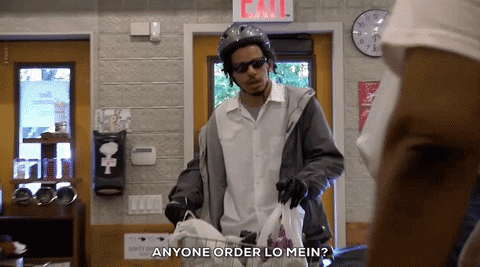
With this post, we’ll explore the concept of online ordering. We’ll cover topics like the value of online ordering to the restauranteur, fulfillment, the differences between ordering food online and traditional takeout, and how you can implement online food ordering for your establishment.
Let’s get started!
The Basics
Online ordering allows customers to order food from your website for pickup, or delivery, at any time, from anywhere.
Why is online ordering good?
Say you have a very successful establishment. You’re one of the most popular eateries in town. With this success, you will eventually plateau due to space and turnover rate. Even with a packed out restaurant, you can only serve so many meals.
Enter online ordering.
This is a way to further maximize the output, and therefore revenue, of your fixed brick-and-mortar space. When you offer online food ordering, you will avoid the space plateau. Your only limitations will become logistical. Staff, product, ingredients, etc. With creativity, these can be solved, unlike space.
Don’t you mean takeout?
Ordering food online is not an entirely new approach in foodservice, as it builds upon the concept of takeout.
However, there are some important differences between the two.
Online ordering is automated. It does not require any labor to fulfill. No staff member will need to answer a phone, take down the order, and communicate it to the kitchen. Online orders can flow directly into your POS system for fulfillment without anyone lifting a finger.
Online ordering has a unique connotation, in comparison to takeout.
In the past, takeout has been reserved for certain types of establishments, and not something that you would typically see done by pubs, upscale eateries, fine dining, etc.
Online ordering is changing this by being a means for any establishment to offer their food to customers who want to eat at home, or work, or to avoid a sit-down dining experience for any reason.
Think of online ordering as e-commerce for restaurants. Technically, that’s exactly what it is.
Fulfillment

Your online orders can be fulfilled in one of two ways.
The simplest to you would be pick-up. Let the customer pick up their order themselves. Either the customer can come inside to grab their order, or a staff member could be sent out to their car when they arrive.
The other fulfillment option would be delivery. If you’re doing enough volume in online ordering to support a dedicated delivery staff member, this could help to further increase revenue by the added convenience for the customer.
Of course, there is always the option of offering both methods to your customers. Additional convenience is always a good thing in today’s market.
Bonus points: Services like Uber Eats and GrubHub represent not only an alternative fulfillment method for online ordering but an entirely unique sales channel. Food delivery services would not be an extension of your own online ordering, rather they are a separate system and database where you would need to sync your menu. For the additional effort, you would gain exposure to often entirely new customers.
Summing it up
Online ordering represents an opportunity to increase gross revenue for next to no operational cost.
Offering online ordering will require a fixed, one-time investment, followed by practically unlimited earning potential. Once set up, your online ordering platform will probably require small, regular maintenance in order to ensure that your online menu is up to date with your offline menu.
Online ordering has the potential to significantly increase the revenue of fixed brick-and-mortar spaces for a relatively small cost of entry.
Making it happen
Offering online ordering will take investment.
Financially, for one. Your online ordering platform will need to be produced. Fortunately, there are a number of remarkable open source technologies available as the framework for your platform. WooCommerce, for one. If your website already runs on WordPress, then WooCommerce will plug right in. Your web developer will be able to help you choose the path which is best for your business.
It’s important to realize that online ordering will also require an investment of time. You will need to turn your menu into product data, produce high-quality photos of each dish, write descriptions for your dishes if you don’t already have them, and more.
Below is an outline of what the path to online ordering will look like
- You will need to convert your menu into product data. This will need to be done in a spreadsheet. You will need columns for title, description, price, options, allergies, etc.
- You will want to produce high-quality images of each of your dishes. If you don’t have the talent for this in-house, you may want to contact a local food photographer.
- Contact your web design and development team for the production of your online ordering platform. You will need to provide them with the photos and menu data that you’ve prepared.
Further reading
The state of online food ordering
According to Fortune
Olive Garden
A major US chain’s approach to online ordering
The hidden psychology of ordering food online
An insightful read from Fast Company
Get our blogs in your inbox
No spam. Ever.
Only good, clean value. Scout’s honor.
Make the connection
Discover how Quarry's unique blend of design, technology, strategy, service, and economy can grow your digital product.
